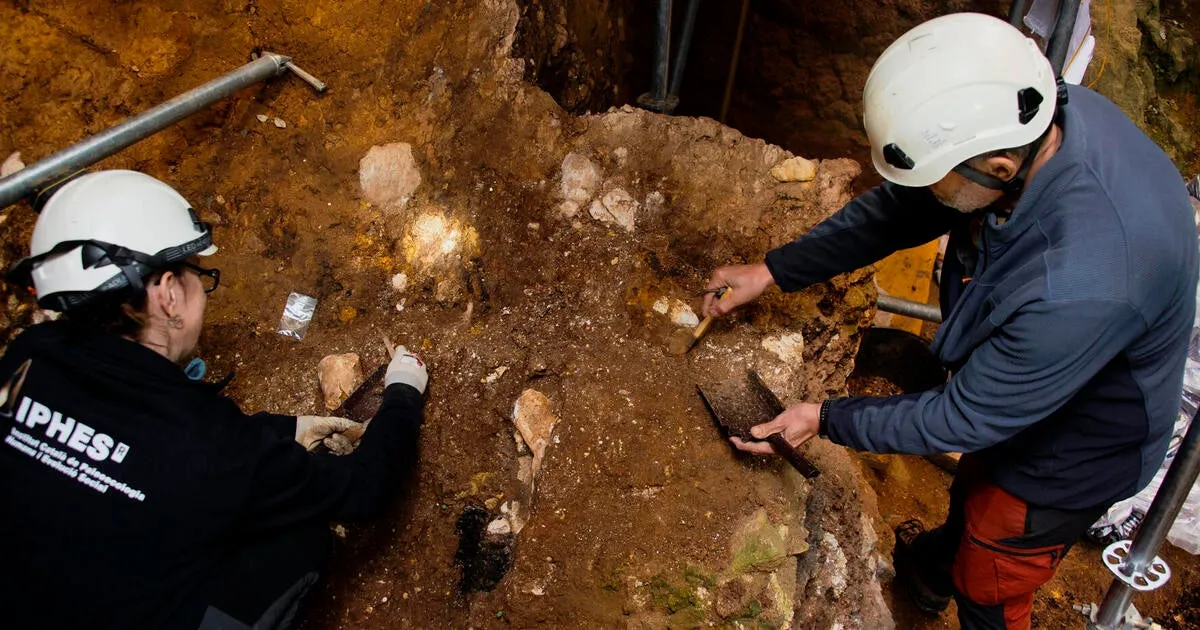
Researchers in Spain have made a groundbreaking discovery, unearthing a fossil that may represent a new prehistoric member of the human family tree. This find, described as the earliest known remnants of a face in Western Europe, was located at the Atapuerca archaeological site in northern Spain in 2022. A team of dedicated scientists has been examining the fossilized remains, affectionately nicknamed Pink, in hopes of uncovering more details about this ancient hominin.
The findings were recently published in the journal Nature, revealing that Pink's remains are dated to be between 1.1 and 1.4 million years old. Study author Rosa Huguet from Spain's University of Rovira i Virgili highlighted the significance of this discovery during a news conference, stating that it introduces a new chapter in the history of human evolution in Europe. Researchers suggest that early humans migrated to Europe from the eastern side of the continent approximately 1.4 million years ago.
Prior to this finding, the oldest-known human species in Western Europe was the Homo antecessor, with remains estimated to be around 850,000 years old. In contrast, the oldest human ancestor discovered in Europe is the Dmanisi people, or Homo georgicus, who lived in what is now Georgia, with remains dating back to 1.8 million years ago. This species is recognized as the first group of humans to migrate from Africa to Europe.
The fossilized remains, which include an upper jawbone and a partial cheekbone, were excavated from a depth of 52 feet at a site known as Sima del Elefante, or the "elephant pit." Located less than 1,000 feet from where Homo antecessor fossils were found in 1994, these bones are significant, although they do not provide enough information to determine Pink's age or gender. Using advanced 3D imaging techniques, researchers were able to reconstruct Pink's face, revealing features that are more robust and forward-projected than those of modern humans or Homo antecessor.
Maria Martinon-Torres, director of Spain's National Research Center on Human Evolution, noted that Pink's facial structure shares some similarities with the human ancestor Homo erectus. This species, which existed for nearly 2 million years, is known for evolving body proportions more similar to modern humans and for its use of fire and tools. However, the similarities were not conclusive enough for scientists to categorize Pink definitively as Homo erectus. Instead, they have proposed the possibility of a new species, tentatively named Homo 'affinis' erectus. Martinon-Torres emphasized that this is the most reasonable hypothesis based on the available evidence.
In addition to the facial reconstruction, researchers analyzed small stone tools and animal bones found at the excavation site to gain insights into Pink's lifestyle. The environment during this period is believed to have been a humid forest landscape, home to various species such as horses, ancient cattle, monkeys, and hippos. Huguet mentioned that the abundance of water in the area would have made it an ideal habitat for early humans.
The researchers propose that Pink may represent a transitional species between the Homo georgicus and Homo antecessor species. Study co-author Jose Maria Bermudez de Castro noted that it is likely this species became extinct during a severe global cooling event that occurred nearly 900,000 years ago. The excavation site will continue to be a focus of research as scientists strive to uncover more about this intriguing chapter in the story of human evolution.
This discovery not only sheds light on the past but also enriches our understanding of the complex journey of human ancestry in Europe, as researchers continue to explore the fascinating narrative of our evolutionary history.